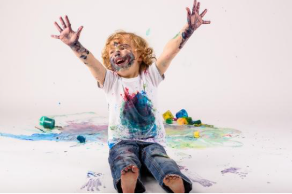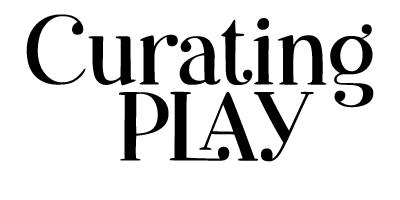Highlighting the developmental power of open-ended, messy, sensory-rich art experiences
Walk into a preschool classroom mid-morning, and there’s a good chance you’ll find someone with paint in their hair, glue on their hands, and a huge grin on their face. If it’s a child, that’s a great sign. If it’s a teacher too? Even better.
This kind of joyful, messy art is more than just adorable—it’s developmental gold. In a world that often prioritizes early academics, finished products, and tidy bulletin boards, we need to reclaim the magic that lives in process art: open-ended, sensory-rich, child-driven experiences that celebrate creativity over conformity.

Why Process Art Matters
Process art is about the experience of creating—not about producing something that looks a certain way. When children are offered materials and time without adult-imposed expectations, they explore, experiment, and express. They make choices, solve problems, and engage their senses. And as they do, their brains are lighting up.
According to a 2020 study published in Early Child Development and Care, young children involved in process-based art demonstrate increased persistence, self-regulation, and creative thinking—skills tied closely to executive function and school readiness. These are not side effects. These are the goals.
Process art also nurtures emotional development. A child might mix paint to create a brand-new color that delights them. Another might scribble furiously as a way to process a big feeling. When we remove the pressure to “make it look right,” we open the door for art to become a safe space for expression, identity, and belonging.
What’s Wrong with Product Art?
Let’s be honest. We’ve all seen 20 paper plate snowmen with the googly eyes in exactly the same spot. These types of activities often look cute, but they tell us more about the teacher’s cutting and gluing than the child’s thinking.
When children are directed to follow a set of adult instructions to make a predetermined product, they miss the opportunity to make choices, take creative risks, or develop original ideas. And for some children, especially those who are neurodivergent or less confident in fine motor skills, it can feel more like a test than a joyful experience.
A 2019 article in Journal of Early Childhood Research found that teacher-directed, product-focused art often leads to performance anxiety in preschoolers, especially when praise is tied to the final outcome rather than the process. It may look like art, but it doesn’t feel like art to the child.
Process Art Builds Brains, Bodies, and Confidence
So what’s happening during a truly child-centered art experience?
- Cognitive Development: Children explore cause and effect (What happens if I mix red and yellow?), spatial reasoning (How do these shapes fit together?), and symbolic thinking (This scribble is my rocket ship!). These are the building blocks of later literacy, math, and scientific understanding.
- Motor Skills: Using brushes, droppers, scissors, and clay strengthens both fine and gross motor coordination. This matters more than perfect handwriting at age four.
- Language and Social Skills: As children narrate their art or talk with peers, they stretch vocabulary and learn how to collaborate and problem-solve.
- Emotional Growth: There’s pride in doing something your own way. There’s resilience in trying again. And there’s peace in being absorbed in the sensory experience of movement, color, and texture.
As Dr. Sandra Duncan reminds us in Through a Child’s Eyes (2021), “Process art is where children do the thinking. Product art is where adults do the thinking.” Our job as educators, parents, and play advocates is to make space for children to do the thinking.
So What Can We Do?
- Offer open-ended materials: Think paint, markers, chalk, clay, scraps of paper, fabric, natural objects—without instructions.
- Stay curious, not corrective: Instead of “That’s not how you do it,” try, “Tell me about what you’re making!”
- Display work respectfully: Don’t “fix” it or demand a title. Just honor it as it is.
- Advocate for messy learning: Whether you’re leading a classroom or speaking with families, help others see the brain-building power of a little chaos.
Art time is not recess from “real learning.” It is real learning. When we step back from glitter-glued templates and lean into the glorious, messy unknown, we give children exactly what they need: freedom to explore, tools to express themselves, and space to grow into the thinkers and makers they’re meant to be.
So, roll up your sleeves. Let the paint fly. And trust the process.




